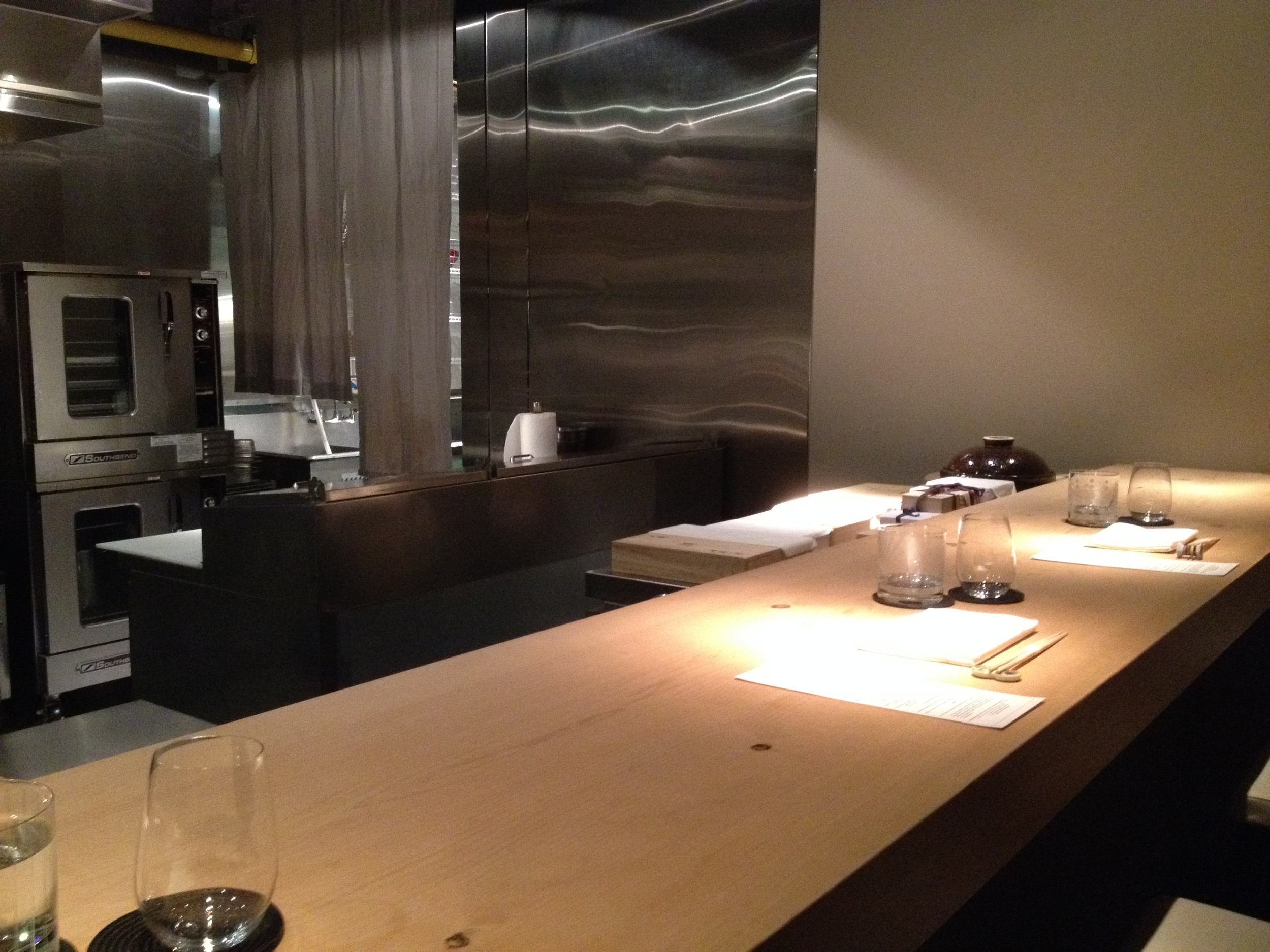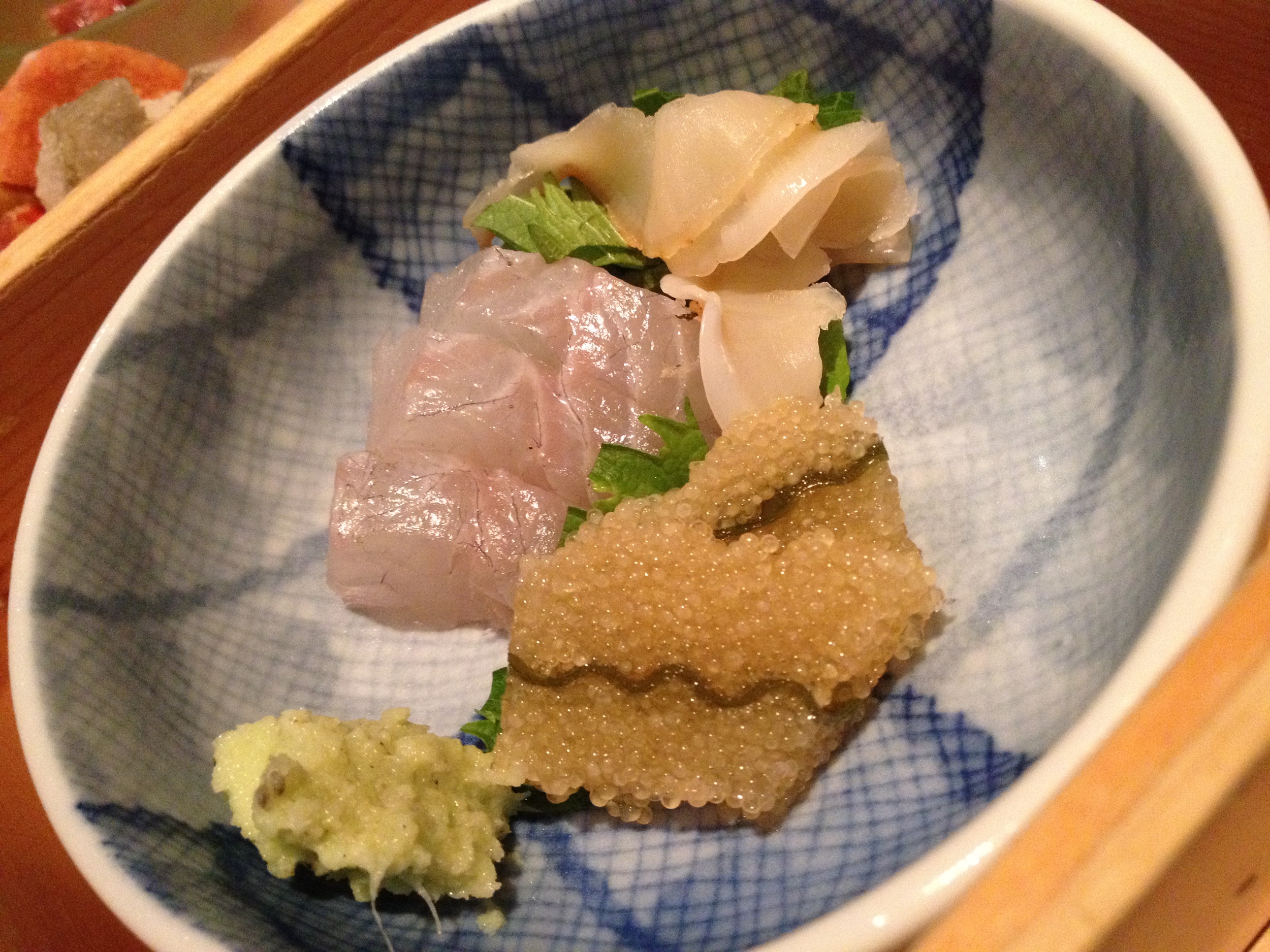- Cost: $200, before drinks, tax, and tip
- Size: 5 seats at counter, plus two tables
- Style: Otsumami/kaiseki + sushi
- Reserved: 4 weeks in advance
Much of the press surrounding Naoe (outside of the "best sushi in America" lists that circulate every now and then) centers on Chef Kevin Cory. Indeed, in my experience at the restaurant, what stuck with me even more than the food was Chef Cory's passion for not only authentic Japanese flavors but also the local culture and food of Kanazawa and the Noto peninsula, where his family is from.
Finding the restaurant itself is an authentic "Tokyo" experience, as it sits behind an unmarked door next to a supermarket in a residential community. The environment is spartan and about as soft-spoken as Chef Cory's demeanor.
The omakase course at Naoe starts with a long sequence of otsumami, with some dishes more likely to be found in a kaiseki meal, such as chawanmushi, and shio-grilled whole fish. My meal featured several items that I have not seen before outside of Japan, such as house-made shutou (fermented katsuo entrails), house-cured kazunoko, and konowato (sea cucumber guts). The savory part of the meal closed with a whole wild unagi that had been grilled kabayaki-style; this is the sort of thing that I had only seen before in eel-specialty restaurants in Japan. You'd be hard-pressed to find such items in some of the most "Japanese" sushi restaurants in New York or Los Angeles, as many chefs (rightly) assume such delicacies are not the interest of American sushi diners and simply do not make the effort to prepare them.
The passion for sourcing top ingredients was evident in the presence of items such as iidako (baby octopus), karasumi, and saba that had been cured in house-made koji. While the ingredient quality was generally at a very high level, a few items (particularly uni from hokkaido, and a side of ankimo) tasted slightly "off", and were not top-tier in my opinion.
My impression was that nigiri was not really the emphasis of the meal. On any given night, Naoe features 8-10 items served as nigiri, which is about half of what you might expect in a typical omakase. Indeed, I found the nigiri to be the weakest part of the meal - largely due to the shari that was "wet" and almost sticky, and seemed to be cooked inconsistently. This fact sort of encapsulates my impression of the meal: the quality of most of the ingredients was impeccable, the passion in the preparation of numerous labor-intensive items was obvious, but the technique was not at the highest level.
Given the fact that nigiri takes a back seat to the otsumami, and the fact that the omakase purposely does not include some typical items like red-fleshed fish, it would be inaccurate to call this a traditional sushi meal. This is despite the fact that the flavor profile of most dishes was indeed very traditional. A sequence of desserts straddled traditional (matcha and fruit) and non-traditional (shoyu ice cream) lines, but were all pretty excellent.
It should be noted that Naoe is more expensive than many of the top sushi restaurants in places like New York or Los Angeles, while offering a different but not necessarily "better" experience. Frankly, if you are only looking for good nigiri sushi, you will be disappointed here. Beware of add-ons: I was served two bites of bachiko (dried sea cucumber gonads) that were great, but came at an additional cost of $30 per piece!
It is difficult for me to recommend a sushi restaurant where the highlights do not include the sushi, but I think in this case Naoe breaks that mold. If nothing else, it is destination-worthy for its offering of ultra-rare delicacies and the fact that a number of difficult-to-prepare items are made in-house. Such dedication to Japanese cuisine in an American-born chef is rare and noteworthy in my view.
























